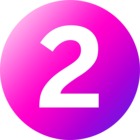Hello!
I would like respondents to see a seating chart with the distribution of booked/available seats drawn from different distributions, which vary with the treatment they are in. This means that two respondents in the same treatment will not necessarily get to see the exact same seating chart--rather, the chart has to be generated for each respondent (from the distribution for the respective treatment).
The number of possible seating arrangements is too big for it to be efficient to generate all images, include them in Files and then link them in the question. It seems that the only efficient way to do this is using JavaScript and jQuery. I do not know JavaScript; however, I have managed to find and run pieces of code to draw "true" random numbers from random.org (to generate the embedded data necessary for the distributions of booked/available seats). I have also found script that creates the seating chart here: https://www.jqueryscript.net/chart-graph/Minimalist-Seating-Chart-Plugin-with-jQuery-flexiSeats.html. I need a hand to understand how I can use this linked code in Qualtrics, as my attempts until now have failed.
Thanks in advance!
Best answer by wscampbell
View original


